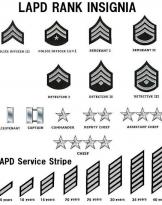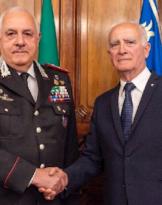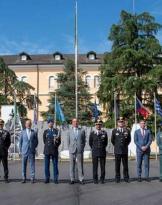The Carabinieri of the Provincial Command of Foggia, with the operational support also of the soldiers of the other Provincial Commands of the Arma della Carabinieri Legion "Puglia", of the Heliborne Hunters Squadron of "Puglia", of the Carabinieri Dog Nuclei of Modugno (BA), Chieti and Tito (PZ), as well as of the Carabinieri Helicopter Nucleus of Rome and of the 11th Carabinieri Regiment "Puglia", carried out a precautionary custody order issued by the Gip at the Court of Bari, at the request of the local District Anti-Mafia Directorate and with the contribution of the National Anti-Mafia Directorate, against no. 82 people1, all seriously suspects for the crimes of criminal association aimed at trafficking and dealing in drugs and other crimes, aggravated by the mafia method and purpose.
Without prejudice to the evaluation in the subsequent procedural phases with the contribution of the defense, the massive anti-mafia investigation conventionally called "Game Over", conducted by the Investigative Nucleus of the Carabinieri Provincial Command of Foggia and coordinated by the Anti-Mafia District Directorate of Bari, originates from the proceeding relating to the murder - of mafia origin - of TIZZANO Roberto and the simultaneous wounding of BRUNO Roberto, both prominent exponents of the "Moretti-Pellegrino-Lanza" battery, sub-articulation of the mafia organization known as the "Società Foggiana"2, taken with gunshots on the afternoon of 29 October 2016. For this mafia crime, VILLANI Patrizio, SINESI Cosimo Damiano and SINESI Francesco were definitively convicted, all belonging to the “Sinesi-Francavilla” battery.
The sentences established that SINESI Francesco was the instigator of the brutal action, in response to the attempted murder perpetrated, on 6 September 2016, against his father SINESI Roberto, historical head of the homonymous mafia battery. The scene of the crime, the "All'H24" bar in Foggia, was found, following the investigations carried out, to be the central operational base of drug trafficking. From the investigative developments carried out in this regard, through the massive use of technical activities3, also of the latest generation, it was possible, in the following periods, to carry out - among others - two important anti-mafia investigations always coordinated by the District Anti-Mafia Directorate of Bari and precisely:
• "Tenth Action": judicial investigation which ended with the execution of a precautionary custody order against the 30 largest members of the mafia consortium of the so-called. "Società Foggiana", which concerned the criminal context of extortion to the detriment of the city's entrepreneurial fabric, practiced "on the carpet" and with systematic criteria towards the relative victims;
• "DecimaBis": judicial investigation which ended with the execution of a precautionary custody order against 40 individuals belonging to the aforementioned consortium, which ascertained the criminal operating areas and the infiltrations into the social and economic fabric and in particular the extortions carried out with the mafia method, the disturbed freedom of charms and also the ambushes carried out with weapons, all in order to exercise violent control of the territory, of a "military" nature, a typical expression of that force of intimidation typical of mafia action. The operation carried out today, conventionally called "Game Over", represents the continuation, on the investigative side, of the law enforcement action against the mafia organization "Società Foggiana". It has focused in particular on the illicit sources of income of this criminal structure which, according to the investigations, derive from two channels:
- the systematic extortions, carried out against the entrepreneurial fabric and reconstructed in detail by the Decimation and Decimabis investigations, practiced with the aim of channeling the illicit proceeds into the "common fund", used for the maintenance, assistance and survival of the mafia association;
- the flourishing drug trafficking, perpetrated with an aggressive and meticulous system of rules, which guaranteed, to the operational top management of the association, not coincidentally coinciding with the top management of the mafia "batteries", the possibility of capillary control and a monopoly position in the sale of cocaine, through the imposition of the obligation, under penalty of heavy retaliation, including armed ones, to commercialize only the narcotic substance supplied by the association itself. This imposition, implemented with the typical characteristics of mafia organizations, ensured the association substantial illicit profits and an additional 7 Euros for each gram of cocaine sold in Foggia. Profits, these, also used to feed the "common fund", functional to the pursuit of the criminal purposes of the so-called. "Society of Foggia".
According to what emerged and believed by the investigating judge (always without prejudice to the assessment in the subsequent phases), the disputed crimes would have been perpetrated with organizational and operational methods that faithfully follow those practiced in the field of extortion. The three components of the mafia aggregate of the "Società Foggiana", in fact, exercised their "mafia pressure" for the monopolization of cocaine trafficking in the city area. For such drug trafficking, in fact, the association in question:
- it planned the organization of cocaine trafficking in detail through continuous meetings in which strict rules were determined (the so-called "drug trafficking cartel");
- it imposed a monopoly on the sale of cocaine in the city of Foggia, through its own intimidating force, deriving from the recognized and feared criminal depth of the subjects at the top of the organization itself, directly invested by the historic clan leaders, who made use of a dense information network, used to militarily control the drug dealing "squares";
- has placed considerable quantities of narcotic substances on the city market, estimated at around 10 kilograms of cocaine per month, purchased at a price of just under 40 euros per 3 gram, then resold, depending on the case, at 55 or 60 euros per gram. The profits made by the mafia coterie are quantifiable in at least 200.000 euros per month, and the doses of cocaine placed on the drug dealing squares correspond, however, to about 50.000 per month;
- made use of supervised deposits for the custody and packaging of cocaine;
- "governed" the drug dealing squares with a dense network of sellers, all fully aware of operating illegally in the ambit of an associative context subservient to mafia purposes (so-called mafia finalization of drug trafficking), classified in real "operational teams" and divided, according to the operational level, in the "list of big" and in the "list of small", to which pre-established quantities of cocaine were distributed on a regular basis, in the order of hundreds of grams the first and of the tens of grams instead the seconds;
- it maintained a meticulous accounting of the drugs distributed to the "dealing teams" and the related payments made, collecting them through the "reverse circle" from the drug dealers and thus elaborating real "accounting lists", functional for the management of drug trafficking;
- it collected the profits of drug trafficking and, in analogy with the management of the profits of extortion, it fed the "common fund", used to distribute illicit earnings, ensure sums to associates, money donated to the maintenance of family members and acolytes in a state of detention, also with the aim of discouraging the phenomenon of repentance.
The investigative techniques used have highlighted the essence and nature of the bonds that united - for various reasons - all the subjects involved in the core business of the "System", i.e. the "entrepreneurial" exercise of the sale of cocaine.
The criminal strategy of the members of the organization presupposed - as resulted from some clear and explicit conversations - the existence "upstream" of a "pactum sceleris", signed by the historical leaders of the clans making up the confederate mafia batteries in the "Società Foggiana". The drug trafficking management methods (to which the suspects themselves had given, in turn, the name of "System"), provided for the attribution, within the association, of well-defined roles and for each one reconstructed in detail based on the results of the examination of the investigative material collected.
The investigations thus conducted by the Investigative Nucleus of the Carabinieri Provincial Command of Foggia, under the coordination of the Anti-Mafia District Directorate of Bari and with the contribution of the National Anti-Mafia Directorate, which applied one of its magistrates, made it possible to know numerous and detailed elements characterizing the complex and articulated criminal dynamics of the mafia organization, as well as the internal relationships, not without conflict between the suspects themselves, the accurate modus operandi used, the extent of drug trafficking nti marketed under a monopoly regime, controlled thanks to the use of mafia methods, and ultimately also the distribution and final destination of the illicitly made profits, to feed, without interruption, the "System" of the "Society of Foggia".
1 of which 81 subjected to prison custody and 1 under house arrest
2 made up of three "batteries": "Moretti-Pellegrino-Lanza", "Sinesi-Francavilla" and "Trisciuoglio-Prencipe-Tolonese"
3 interception












